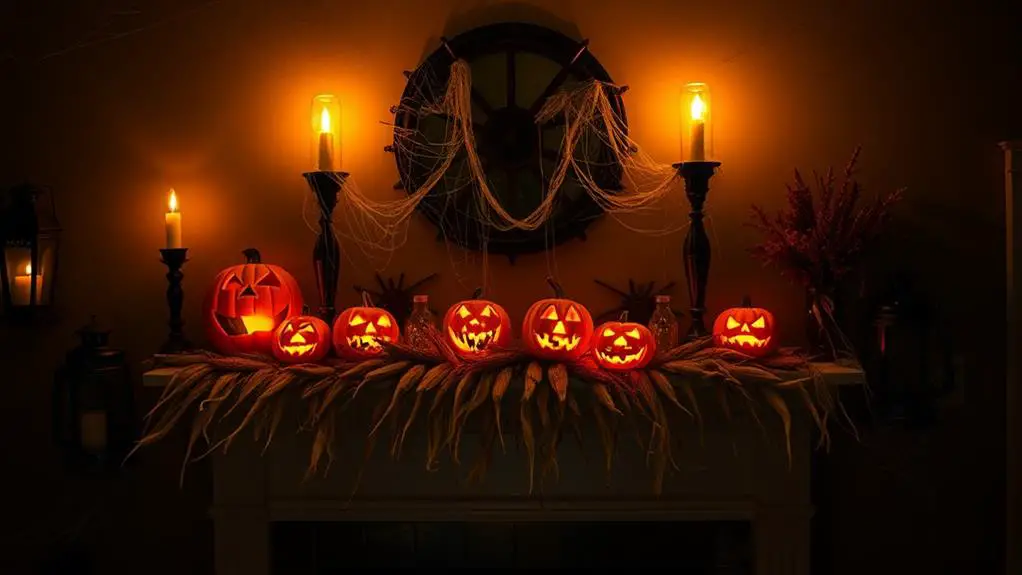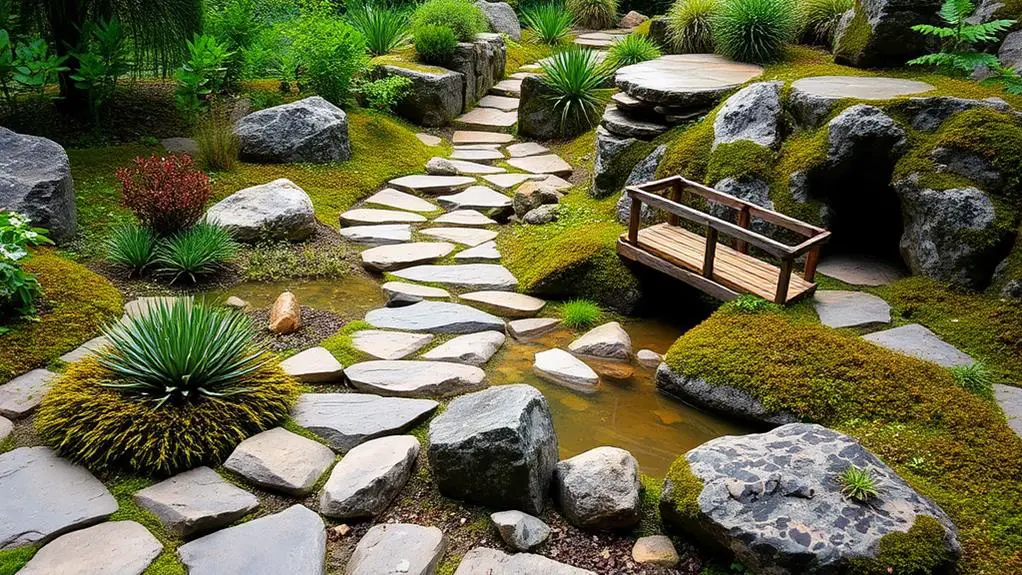As you consider adding a small greenhouse to your space, you're likely thinking about the possibilities – from starting seeds to growing your favorite herbs year-round. You might be wondering which style and size will fit your needs, whether it's a compact balcony solution or a longer patio design. With so many options available, it can be overwhelming to decide where to start. But with a little creativity and planning, you can create a thriving mini garden that brings joy and freshness to your daily life. What will you grow in your small greenhouse?
Balcony Greenhouse Solutions
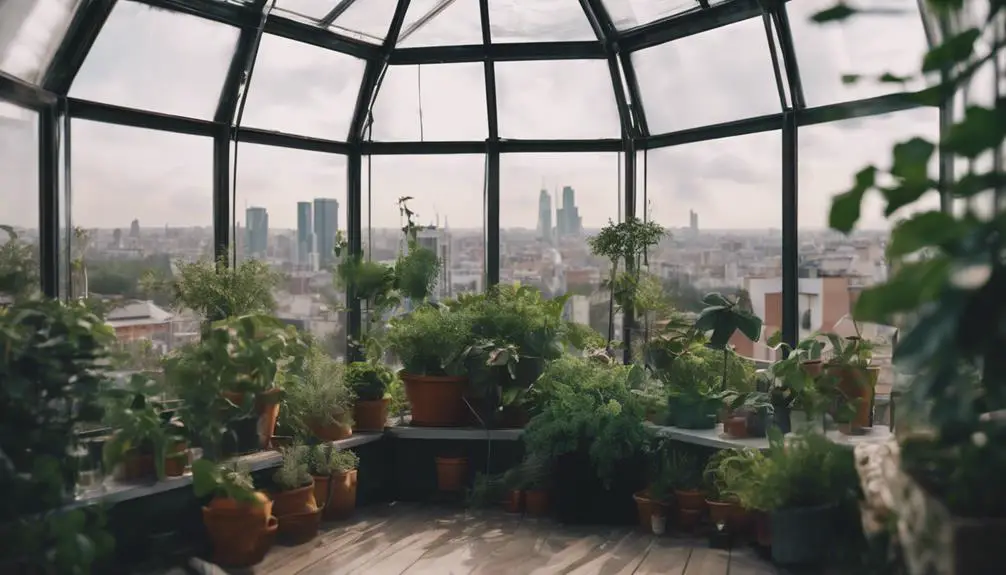
You can create a compact balcony greenhouse solution by utilizing wall-mounted planters or trellises that maximize vertical space and take advantage of natural sunlight.
This innovative approach allows you to cultivate a lush urban oasis, even in the most space-constrained balconies. By leveraging the structural integrity of your balcony's walls, you can perfect every available inch, creating a verdant retreat that's both aesthetically pleasing and functional.
When designing your balcony decor, consider incorporating self-watering planters or hydroponic systems to minimize maintenance and guarantee healthy plant growth.
Strategically positioning your planters or trellises can also help create a microclimate, shielding your plants from harsh winds or extreme temperatures.
In addition, you can harness the power of solar radiation by orienting your planters to receive maximum sunlight exposure.
Patio Greenhouse Designs
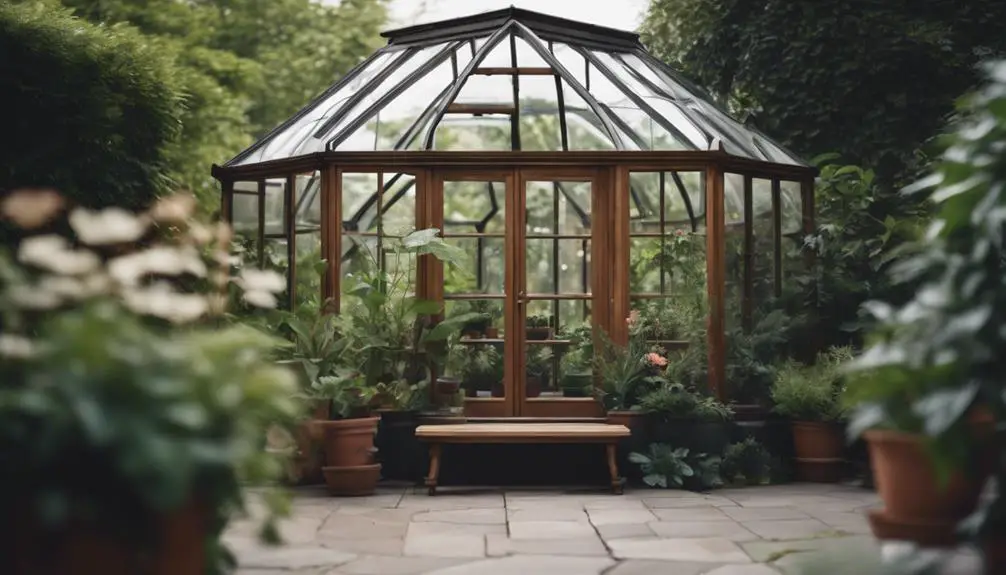
As you design your patio greenhouse, you'll need to carefully consider how to optimize the available space.
Selecting mini greenhouse options that fit your specific needs is crucial.
You'll also want to explore attached greenhouse plans, which can be integrated seamlessly into your existing patio structure.
Patio Space Optimization
By strategically positioning a patio greenhouse in a compact footprint, homeowners can effectively capitalize on limited outdoor space while cultivating a thriving mini-ecosystem.
To optimize patio space, consider the patio limits and furniture arrangement. Measure the available area to determine the maximum size of your patio greenhouse. Consider a lean-to or wall-mounted design to make the most of vertical space. When arranging furniture, prioritize functionality and leave sufficient space for easy access and maintenance.
Consider a multi-tiered or vertical garden to maximize growing space while minimizing floor usage.
Incorporate space-saving features such as retractable trellises, hanging planters, or wall-mounted planters to increase growing capacity without encroaching on walking space.
Implement a modular design that allows you to easily add or remove components as needed. This flexibility will enable you to adapt to changing seasons, plant growth, and personal preferences.
Mini Greenhouse Options
Patio greenhouse designs come in a variety of styles and materials, offering homeowners a range of mini greenhouse options that cater to different climates, budgets, and aesthetic preferences.
You can choose from modern, sleek designs made of aluminum or steel frames, or opt for a more traditional look with wooden or PVC frames.
Mini greenhouses are perfect for small propagation, allowing you to start seeds or cuttings in a controlled environment before transplanting them to your outdoor garden.
When selecting a mini greenhouse, consider the size and layout of your patio or outdoor space.
You'll want to guarantee the greenhouse fits comfortably and receives prime sunlight.
Some popular options include compact, hexagonal designs that can be placed in a corner, or longer, rectangular greenhouses that can be situated against a wall or fence.
Whatever style you choose, mini greenhouses provide the perfect environment for nurturing your mini gardens, from herbs and succulents to flowers and vegetables.
With proper care, your mini greenhouse will thrive, providing you with a bounty of fresh produce and a sense of accomplishment.
Attached Greenhouse Plans
You can create an attached greenhouse by building it directly into your home's exterior wall, leveraging existing structural support and thermal mass to regulate the interior climate.
This design integrates seamlessly with your home's architecture, providing a sleek and modern look. By utilizing the existing wall, you can reduce construction costs and minimize the footprint of your greenhouse.
Additionally, the shared wall acts as a thermal mass, absorbing and releasing heat to maintain a stable temperature.
Attached greenhouses can be designed as extensions of your home, providing a seamless shift between indoors and outdoors.
You can create an attached garden, perfect for growing herbs, vegetables, or flowers, while still being connected to your living space. Greenhouse extensions can also be designed to accommodate specific climate zones, allowing you to grow a wider variety of plants.
With careful planning, an attached greenhouse can become a functional and aesthetically pleasing addition to your home. By incorporating innovative materials and designs, you can create a unique and sustainable space that enhances your living experience.
Mini Indoor Greenhouses
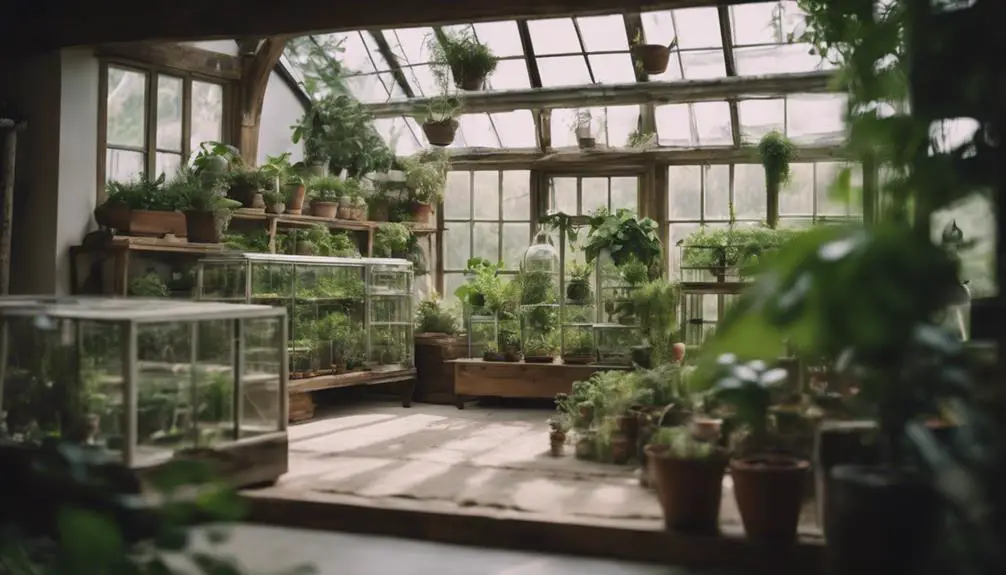
Within compact spaces, mini indoor greenhouses provide an ideal environment for cultivating plants, allowing precise control over temperature, humidity, and light exposure.
You can create a mini climate that's tailored to the specific needs of your plants, facilitating prime growth and development.
By regulating these environmental factors, you can replicate the conditions of a specific region or season, making it possible to grow a wide range of plants year-round.
As you design your mini indoor greenhouse, consider the importance of ventilation, insulation, and lighting.
You'll want to guarantee adequate airflow to prevent the buildup of moisture and heat, while also maintaining a consistent temperature.
Insulation will help retain heat and maintain a stable environment.
Lighting is also vital, as it will provide the necessary energy for photosynthesis.
By carefully balancing these elements, you can create an indoor oasis that's perfect for growing plants, herbs, or even starting seeds.
With a mini indoor greenhouse, you'll have the freedom to experiment and innovate, pushing the boundaries of what's possible in a small space.
DIY Greenhouse Kits
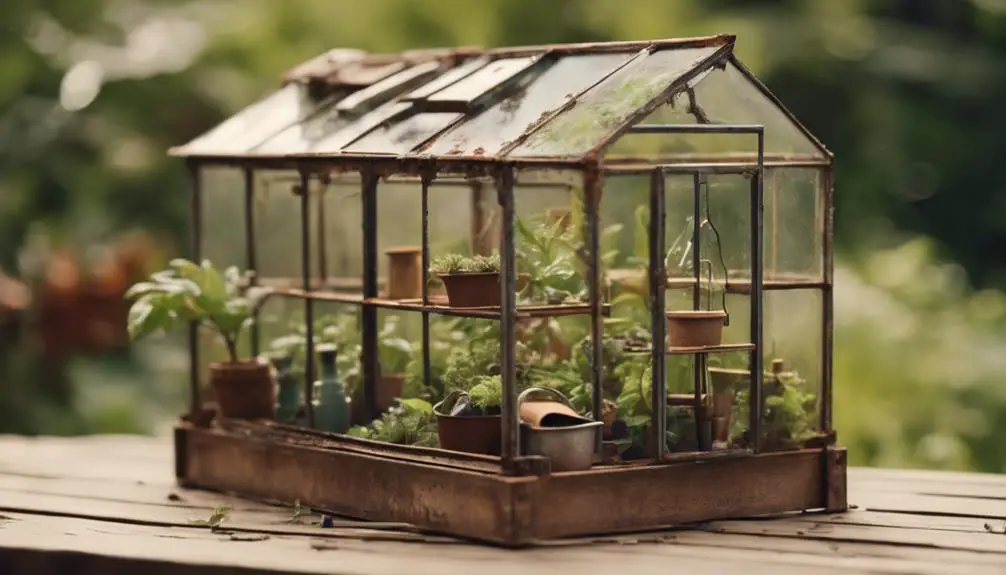
With DIY greenhouse kits, enthusiasts can assemble and customize their own miniature greenhouses, leveraging prefabricated components to optimize space, climate control, and plant growth.
You'll have the flexibility to design a structure that suits your specific needs, whether it's a compact cold frame or a larger, more complex greenhouse.
Kit customization options allow you to choose the frame material, glazing type, and accessories that best fit your climate and plant selection.
Greenhouse framing is a vital aspect of DIY kits, as it provides the structural integrity and support for your plants.
You can opt for aluminum, steel, or PVC frames, each with its own advantages and disadvantages.
Aluminum frames, for instance, are lightweight and corrosion-resistant, while steel frames offer greater strength and durability.
PVC frames, on the other hand, are budget-friendly and easy to assemble.
By selecting the right framing material, you can guarantee a sturdy and efficient greenhouse that promotes healthy plant growth and minimizes maintenance.
With DIY greenhouse kits, the possibilities are endless, and you're limited only by your imagination and creativity.
Small Backyard Greenhouse

Opting for a small backyard greenhouse allows homeowners to create a personalized growing space that maximizes their outdoor area, even in tight urban or suburban settings.
By installing a small greenhouse, you can transform a small section of your yard into a thriving oasis, perfect for cultivating a variety of plants and flowers.
A small backyard greenhouse offers a range of benefits, including increased crop yields, extended growing seasons, and improved climate control.
When selecting a small backyard greenhouse, consider options with a small footprint, such as compact hoop houses or lean-to greenhouses. These designs are ideal for urban and suburban homeowners with limited outdoor space.
By incorporating features like automatic ventilation systems, irrigation systems, and trellises, you can create a highly efficient and productive growing environment.
With a small backyard greenhouse, you can enjoy the benefits of greenhouse gardening while maintaining a beautiful and functional outdoor space.
Space-Saving Greenhouse Ideas

By incorporating clever design elements and smart layout strategies, you can create a highly functional and efficient space-saving greenhouse that maximizes every square inch of available space.
Compact designs, such as vertical or wall-mounted greenhouses, are ideal for small areas. These designs make the most of vertical space, allowing you to grow more plants in a smaller footprint.
Smart layouts also play a pivotal role in optimizing space. Consider a rectangular shape with a central aisle, allowing for easy access to plants and efficient use of space.
Shelving and trellises can be used to add additional growing areas, while also providing structural support. Additionally, incorporating retractable or foldable elements, such as roof vents or benches, can help to conserve space when not in use.
Greenhouse for Apartment Dwellers
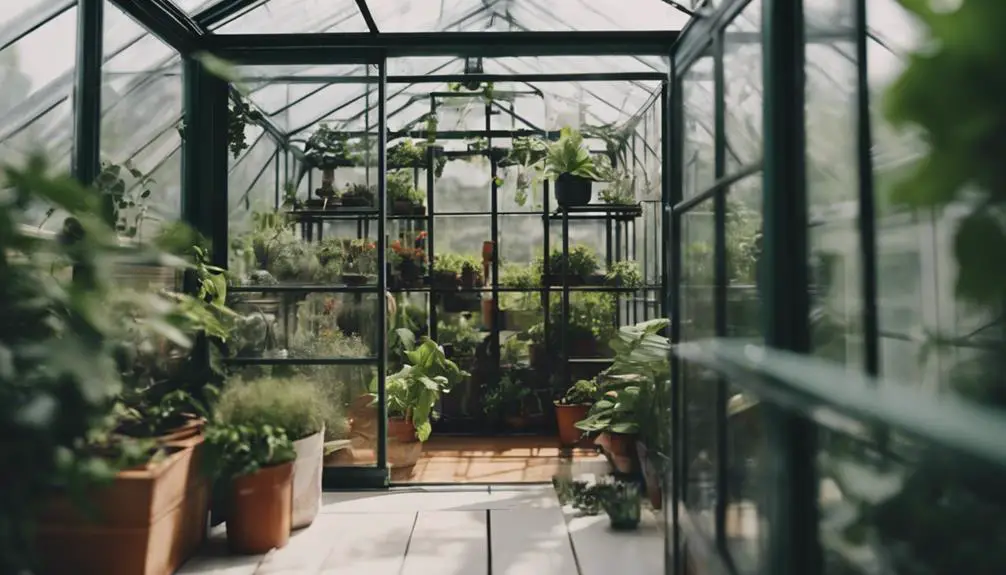
As an apartment dweller, you can successfully cultivate plants year-round in a compact, indoor greenhouse that fits snugly on a balcony, patio, or even indoors, provided you select a model that's specifically designed for small spaces and limited light.
Urban gardening in apartments often comes with space constraints, but modern greenhouses are engineered to overcome these challenges.
Look for models with a compact footprint, such as vertical or wall-mounted greenhouses, which maximize growing space while minimizing floor area.
Consider a mini indoor greenhouse with a hydroponic system, which recirculates water and nutrients, reducing waste and conserving resources.
For ideal growth, choose a greenhouse with adjustable lighting and temperature controls, allowing you to tailor conditions to your plants' specific needs.
Cold Frame Greenhouse Options

You can extend the growing season and protect your plants from frost with cold frame greenhouses, which utilize transparent or translucent materials to capture sunlight and trap heat, thereby creating a microclimate that's 2-5°C warmer than outside temperatures.
This makes them ideal for growers in cold climates who want to get a head start on the season.
By installing a cold frame, you can start seedlings 4-6 weeks earlier than usual, giving them a strong foundation for the growing season.
Cold frames also allow for season extension, enabling you to harvest crops later into the fall or even year-round in mild winter climates.
To maximize the benefits, consider using materials with high thermal mass, such as brick or concrete, to absorb and release heat.
Additionally, incorporate ventilation systems to prevent overheating and maintain perfect growing conditions.
With a well-designed cold frame, you can enjoy a longer growing season and increased yields, even in the chilliest of climates.
Small Polycarbonate Greenhouses

When you opt for a small polycarbonate greenhouse, you'll enjoy several benefits that make it an attractive choice for small-scale gardening.
You'll find that polycarbonate greenhouses offer superior light transmission, insulation, and impact resistance compared to traditional glass greenhouses.
Benefits of Polycarbonate
Polycarbonate panels offer superior light transmission, with up to 85% clarity, allowing more sunlight to penetrate and fuel plant growth in small greenhouses.
This increased light transmission is a significant Polycarbonate advantage, as it enables you to create an ideal environment for your plants to thrive.
Furthermore, Polycarbonate panels provide excellent Greenhouse insulation, retaining heat during cold nights and keeping your plants cozy.
This means you'll use less energy to maintain a stable temperature, reducing your energy costs and environmental footprint.
Additionally, Polycarbonate panels are highly resistant to impact, ensuring your small greenhouse remains secure and protected from extreme weather conditions.
Their durability also means they'll withstand the test of time, minimizing the need for frequent replacements.
As you plan your small greenhouse, incorporating Polycarbonate panels will give you peace of mind, knowing your plants are receiving the light they need while staying safe and secure.
With Polycarbonate, you can create a thriving ecosystem that's both energy-efficient and sustainable.
Easy to Assemble
Small polycarbonate greenhouses boast a streamlined design, featuring snap-together frames and pre-drilled holes that simplify the assembly process, allowing you to quickly erect a functional structure.
This clever design eliminates the need for complex instructions and reduces the assembly time, making it an ideal choice for those who want to get started with their greenhouse project quickly.
With a tool-free setup, you can focus on the fun part – planting and nurturing your plants – rather than spending hours wrestling with complicated hardware.
The frames are typically made of durable, rust-resistant materials that can withstand harsh weather conditions, guaranteeing your greenhouse remains stable and secure.
The pre-drilled holes guarantee a precise fit, eliminating the risk of errors and misalignments.
This quick assembly feature also makes it easy to relocate or reconfigure your greenhouse as needed.
With small polycarbonate greenhouses, you can enjoy the benefits of a functional and efficient growing space without the hassle of complicated assembly.
Get started today and watch your plants thrive in their new habitat!
Repurposed Greenhouse Materials
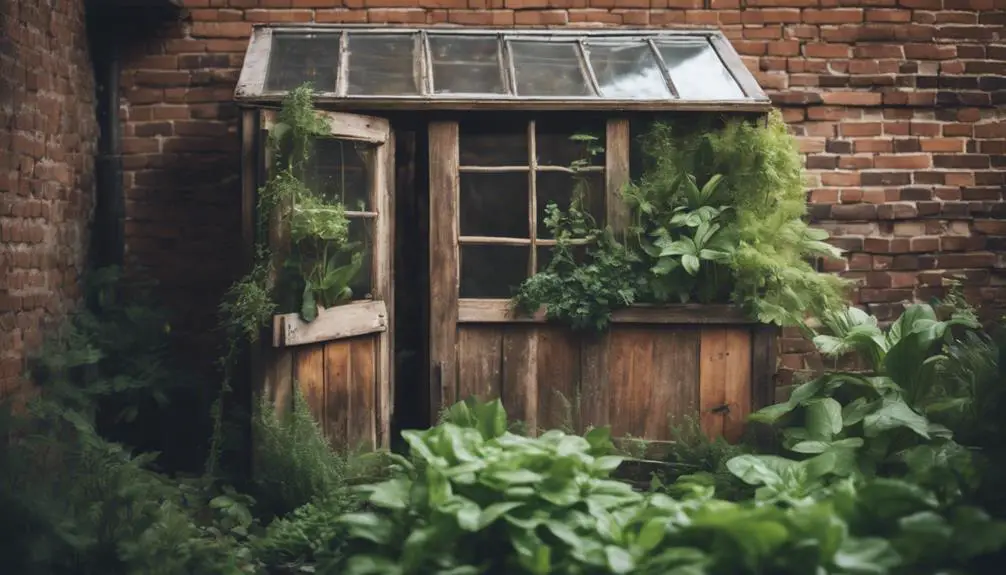
You can creatively repurpose various materials to build a functional and cost-effective greenhouse, reducing waste and environmental impact.
Old pallets, for instance, can be transformed into the frame of your mini-greenhouse. Simply disassemble the pallets, cut them to size, and reassemble them into a rectangular shape. You can then cover the frame with a transparent material, such as polyethylene or acrylic, to allow for sunlight penetration.
Another innovative approach is to use plastic bottles as a DIY glazing material. Cut the bottles in half and attach them to a wooden or metal frame, creating a unique, eco-friendly roof. This not only reduces waste but also provides excellent insulation.
Additionally, you can repurpose old windows, doors, or even a shipping container to create a greenhouse structure. By thinking outside the box and getting creative with recycled materials, you can build a functional and sustainable greenhouse that's both budget-friendly and environmentally responsible.
Vertical Greenhouse Systems
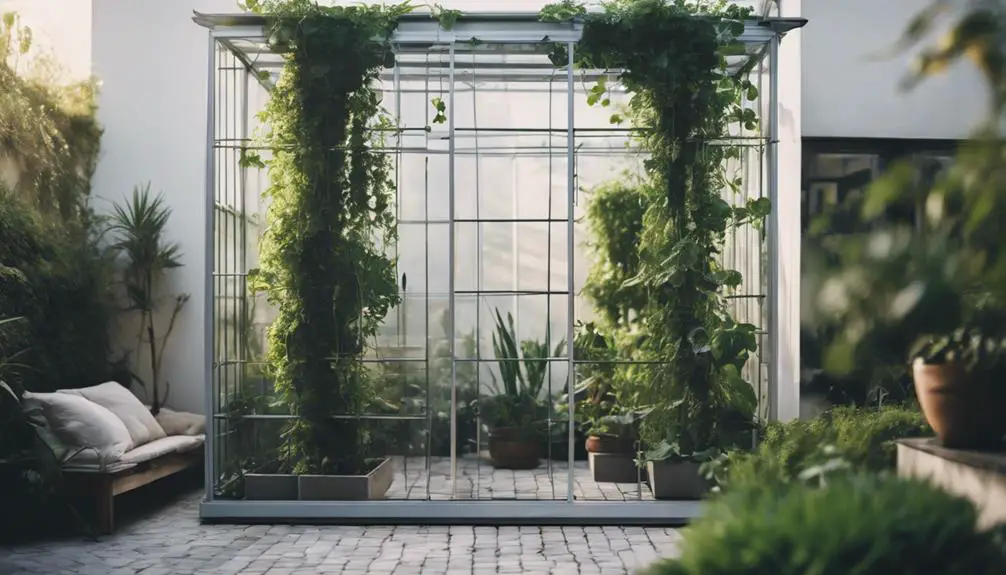
By leveraging space more efficiently, vertical greenhouse systems maximize crop yields while minimizing land use, offering a promising solution for urban agriculture and space-constrained gardening.
As you explore this innovative approach, you'll discover the benefits of growing plants upwards, rather than outwards. Vertical farming, a key component of vertical greenhouse systems, involves stacking layers of crops to increase yields while reducing the footprint.
You can incorporate living walls, also known as green walls or bio-walls, into your vertical greenhouse design. These walls are covered with vegetation, providing insulation, improving air quality, and creating a habitat for beneficial insects.
By using a trellis system or a hydroponic setup, you can train vining plants to grow upwards, making the most of your available space.
When designing your vertical greenhouse system, consider factors such as light exposure, temperature control, and irrigation methods.
With careful planning and execution, you can create a thriving, space-efficient garden that produces abundant harvests while minimizing its ecological footprint.
Greenhouse Window Boxes
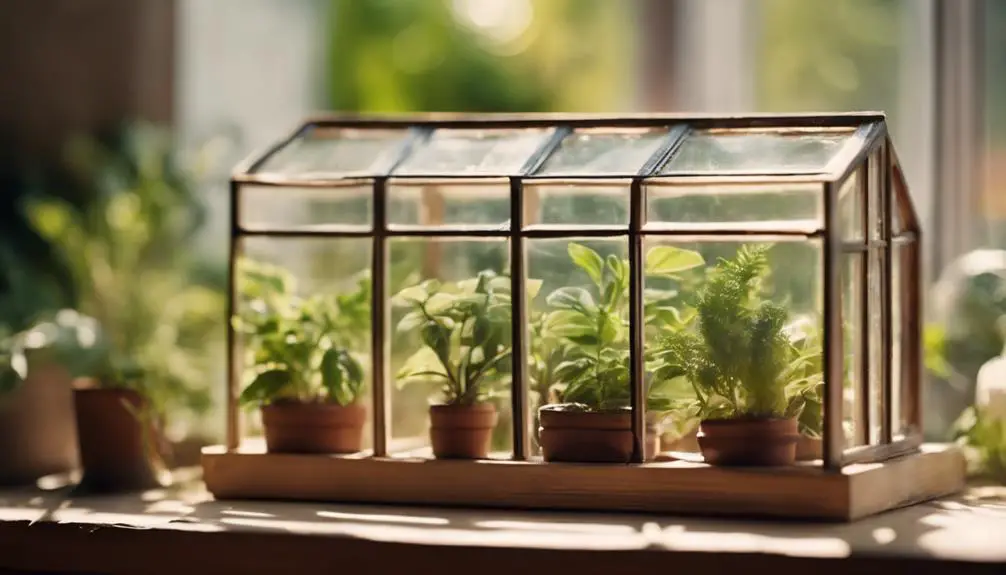
Installing greenhouse window boxes on existing windows or walls can instantly transform your home into a mini-greenhouse, allowing you to cultivate a variety of plants in a controlled microclimate.
By attaching a window box to your exterior windows, you're basically creating a mini-greenhouse effect, where plants thrive in a protected environment. To maximize the benefits, consider incorporating window insulation to minimize heat loss and maintain a consistent temperature.
This is especially vital during colder months when plants require extra care.
When designing your window box, don't forget to add decorative trim to conceal any unsightly gaps or joints. Not only does this enhance the aesthetic appeal, but it also helps to seal in moisture and warmth.
You can choose from a range of materials, such as aluminum or PVC, to create a durable and weather-resistant frame.
Micro Greenhouse Planters
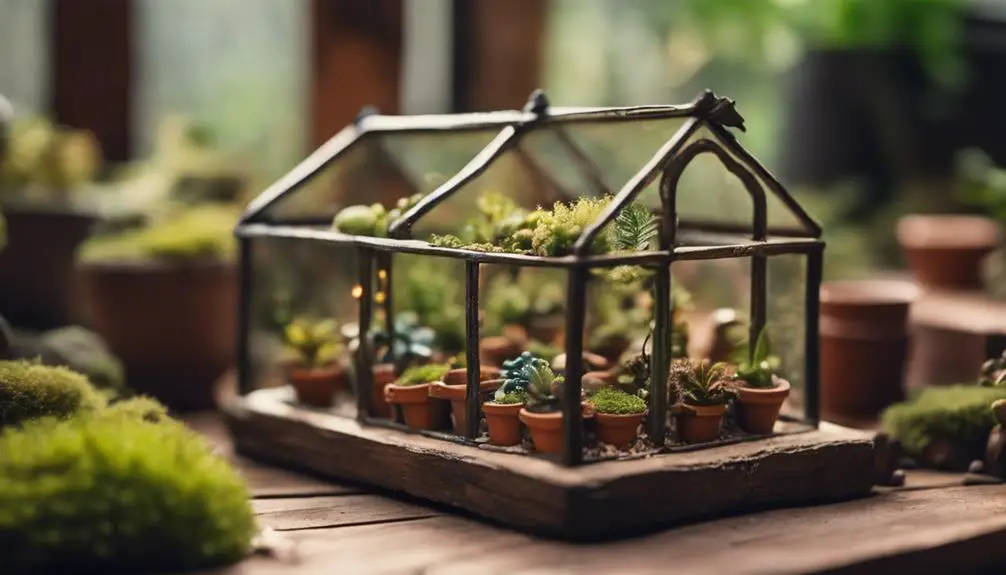
Micro greenhouse planters utilize compact, self-contained environments to cultivate plants in small spaces, providing an ideal solution for urban gardeners or those with limited outdoor areas.
These innovative planters create a micro climate, allowing you to control temperature, humidity, and light levels to perfect plant growth. By replicating the conditions of a traditional greenhouse on a smaller scale, you can grow a wide range of plants, from herbs and vegetables to flowers and succulents.
Mini habitats within the planter can be tailored to meet the specific needs of each plant species.
For example, you can add a heating element to extend the growing season or incorporate a misting system to maintain ideal humidity levels.
The planter's compact design also makes it easy to move around, allowing you to adjust the position to maximize sunlight or provide shade as needed.
With micro greenhouse planters, you can enjoy the benefits of greenhouse gardening without the need for a large outdoor space.
Frequently Asked Questions
Can I Use a Small Greenhouse to Grow Year-Round?
You can achieve year-round growing by controlling climate and optimizing insulation options, such as thermal mass, double glazing, and heating systems, to create a stable environment that defies seasonal limitations.
How Often Should I Water Plants in a Small Greenhouse?
You'll need to establish a precise watering schedule, checking soil moisture daily, as overwatering can be detrimental; aim to maintain a consistent moisture level, adjusting frequency based on temperature, humidity, and plant species.
Do Small Greenhouses Require Special Lighting?
When growing plants in a controlled environment, you'll need to ponder supplemental lighting, as natural light may be insufficient. You'll find LED options offer energy-efficient, spectrum-specific solutions, while also providing the necessary intensity for peak plant growth.
Can I Move a Small Greenhouse to a Different Location?
When relocating a structure, you'll need to assess the new site's conditions, considering factors like wind direction, sunlight, and drainage, then select suitable foundation options, such as anchored footings or ground screws, for a secure and level setup.
Are Small Greenhouses Susceptible to Pests and Diseases?
You'll need to prioritize climate control and pest resistance in your greenhouse design, as you're vulnerable to fungal diseases and pests like aphids, whiteflies, and spider mites, which can devastate your crops if left unchecked.
Conclusion
You've explored the possibilities of small greenhouses, from balcony solutions to repurposed materials.
With these ideas, you can create a controlled environment for propagation, regardless of space or climate.
By utilizing compact designs, DIY kits, and vertical systems, you'll optimize your growing area.
Now, apply your knowledge to cultivate thriving mini gardens, leveraging the benefits of small greenhouses to enhance your horticultural pursuits.


